#carboniferous
Text

Today's random portfolio artwork is a life-size model of a small Arthropleura (40cm long – they grew to 250cm long), which I built for MUSE – the Science Museum of Trento, in 2014.
#Art#Painting#PaleoArt#PalaeoArt#SciArt#SciComm#DigitalArt#Illustration#Dinosaurs#Birds#Reptiles#Palaeontology#Paleontology#Arthropleura#Carboniferous
2K notes
·
View notes
Text

Fossilized dragonflies. Annual report of the Board of Regents of the Smithsonian Institution. 1953.
Internet Archive
#jurassic#carboniferous#insect#insects#fossil#fossils#government publications#paleobiology#paleontology#nemfrog#1953#1950s#1k
1K notes
·
View notes
Text
Another carboniferous painting, going for something more stylized this time
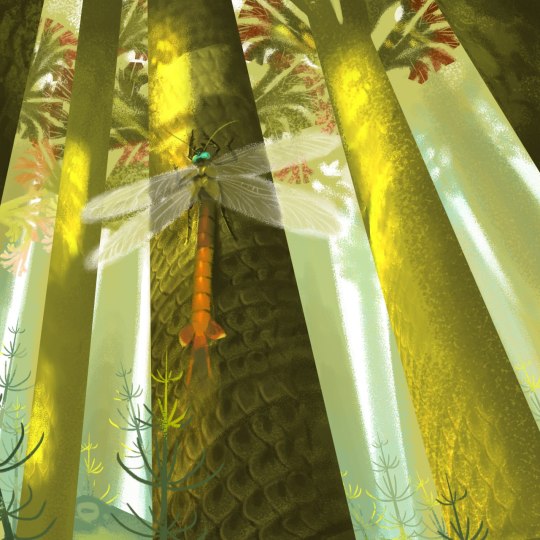
#art#digital art#illustration#insect#paleoart#palaeoblr#carboniferous#meganeura#griffinfly#lepidodendron#scale trees#club mosses#paleozoic#Palaeozoic
2K notes
·
View notes
Text
371 notes
·
View notes
Text
Joggins Formation, Nova Scotia 300 Million Years ago
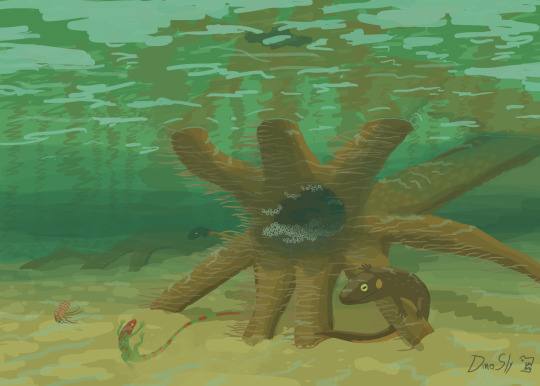
A Denderpeton watches over her eggs hidden inside a Lepidodendron trunk while a Hylonomous (small reptile) and Weygoldtina (Tailless whip scorpion) gets swept away by the current.
As a Canadian I have a soft spot for local paleofauna, especially in the maritimes.
#paleoart#paleontology#palaeoblr#illustration#Joggins Formation#carboniferous#amphibians#reptile#prehistoric#prehistory#Canada#Fossil#Canadian fossils#paleoenvironment#art
651 notes
·
View notes
Text

THE SPIRAL OF TIME
How many Prehistoric critters can you name in the Spiral?
#art#illustration#rustleddoodles#artists on tumblr#paleontology#prehistoric#paleoart#cambrian#ordovician#silurian period#devonian#carboniferous#permian#triassic#Jurassic#cretaceous#miocene#paleogene#dinosaurs#mammals#synapsid#placoderm#arthropods#animalia#my stuff#chordata#ammonite
389 notes
·
View notes
Text
Results of the last #SharkWeek #paleostream! Onychoselache, Titanonarke (it's doing zap zap), Edaphodon and Hagenoselache.
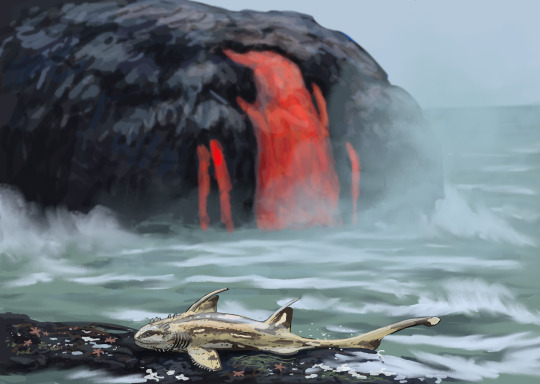

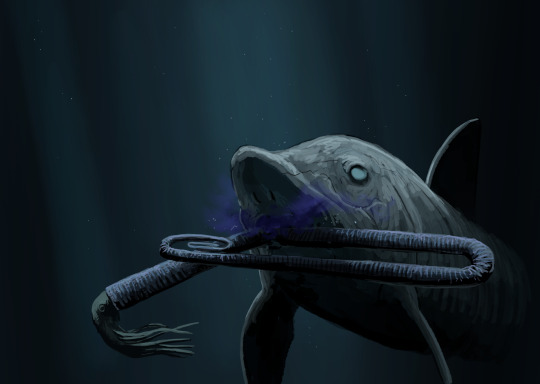
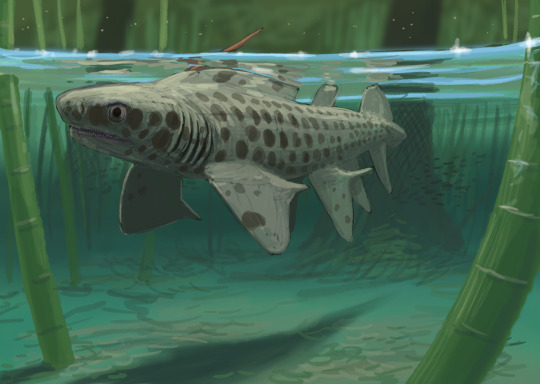
477 notes
·
View notes
Text

A trilobite fossil of a Paladin mucronatus rotundatus from the Four Fathom Limestone Member, Alston Formation in Ireshopeburn, County Durham, England. Carboniferous to Permian aged proetids like Paladin were one of the last trilobites after the Late Devonian Extinction which decimated all other clades. Possibly due to this massive loss in diversity, trilobites would later go extinct during the Permian–Triassic Extinction Event or Great Dying.
#trilobite#fossils#paleontology#palaeontology#paleo#palaeo#paladin#proetidae#carboniferous#paleozoic#prehistoric#science#paleoblr#パラディン#三葉虫#化石#古生物学
88 notes
·
View notes
Text

(Image, as well as much of my information, from Carboniferous Giants and Mass Extinction by George R. McGhee Jr.)
Take a look at this tree. On a scale of 1 to 10, how weird do you think it is?
You quite possibly just gave it a 3 or a 4 or something. Sure, it's a little odd, but does look vaguely normal, right? A friend of mine guessed it was some sort of baobab when I showed him the image.
This is, in fact Lepidodendron, an ancient tree from the Carboniferous, and by modern tree standards it is absolutely bizarre. Its closest surviving relatives, quillworts and clubmosses, only grow to a height of a few centimetres, yet Lepidodendron were giants that shot up to 50 metres tall... Briefly, before dispersing their spores and completely dying off.

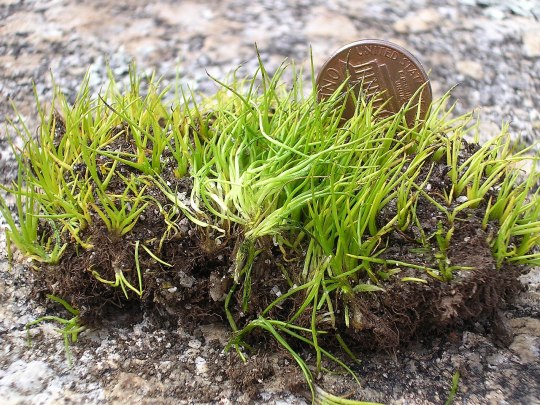
(Lycopodium and Spinulum, modern relatives of Lepidodendron, photos by Bernd Haynold and Pete Pattavina)
You see, Lepidondron lived like a gigantic dandelion. For most of its life, it was a stumpy little thing that stuck close to the ground. Just an odd scaly green stump with some long leaves poking out. The green scales its bark consisted of were the place it conducted its photosynthesis, and thus basically did the work of leaves. The Lepidodendron would stay like this for a couple years, slowly expanding its roots and getting ready for the next step. But its roots would grow mostly horizontally, down not so much! And part of why is that even they had the scaly leaf-like photosynthetic bark. That's right, even their roots could - and to some extend needed to - photosynthesise!


(Fossil Lepidodendron bark in the National Museum of Brazil, photo by Dornicke; a fossilised relative of Lepidodendron with some of its roots visible, photo by Michael C. Rygel)
So why would you ever try to photosynthesise with your roots of all things as a plant? Surely it would make much more sense to just transport the sugars created in other parts there than to have your roots be so shallow that bits of them can catch a little light and make it in situ? Sure, if you're capable of that! This is what modern trees do, but they have two separate vascular tissues they use for transport: xylem, which moves water from the roots to the rest of the plant, and phloem, which moves sugars and other photosynthetic products from the leaves to the rest of the plant. Unfortunately for Lepidodendron, it only had xylem, no phloem, so its sugars were only ever going to move as far as they could diffuse, so every part of the tree needed to have at least a little photosynthesis happening, even the roots.
This truly gets ridiculous when the Lepidodendron decides after a few years of charging up that it's time to reproduce. That's when the weird green stump we have so far starts shooting up, up, up, very quickly, all the way until an enormous 40 or 50 metres in height. Now, modern trees grow this large by being supported by a sturdy wooden core, but that's not what Lepidodendron did. To hold up the entire tree, it relies entirely on its outer bark thickening as it grows. In mechanical terms, it was little more than a huge hollow pole, probably creaking and swaying terribly in the wind. Although I have not been able to confirm this in the literature so far, I suspect that between the shallow roots and the whole thing being held up by its bark, you could probably total a Lepidodendron with a good kick.
Now remember, all this growth is happening without phloem, so the entire length of that stem has to not just be sturdy enough to keep the tree standing, but it also has to keep doing photosynthesis to feed itself. When it reaches its full height, the top of the tree finally starts sprouting branches and small leaves, leaving it looking like the picture at the start. But those are not what it's all about for the tree: the cones that develop among them are. At a height of 50 metres, the spores produced by the cones can very easily be picked up by the wind and blown far, far away. Being spores, rather than seeds as modern trees have, they have no supplies built in whatsoever, so they need to get lucky to land in a spot that has immediate access to water. Luckily, there are a lot of those in the vast Carboniferous swamps, and with the trees doing so much work to spread the spores very widely, some of them are sure to find good spots. And then, with the spores dispersed, the tree is done for. The entire thing, which has just grown to the skies, dies off and soon comes crashing down.
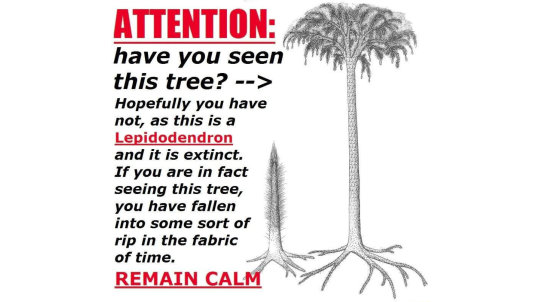
So how weird is this tree? I'd call it a perfect 10.
116 notes
·
View notes
Text
✨ PREHISTORIC CHALLENGE ✨
Felt like challenging myself and drew my sona as one species of my choice from each period of the Phanerozoic. And now I challenge all of you! Draw your own Prehistoric Challenge and tag it #PrehistoricChallenge. I'd love to see what you come up with. 🦖
Here's my sona from the Cambrian to the Paleogene (Tumblr won't let me upload the rest so look for my second post for the last 2).

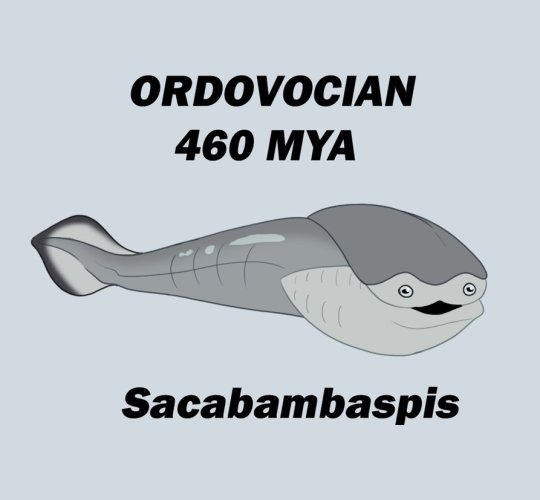
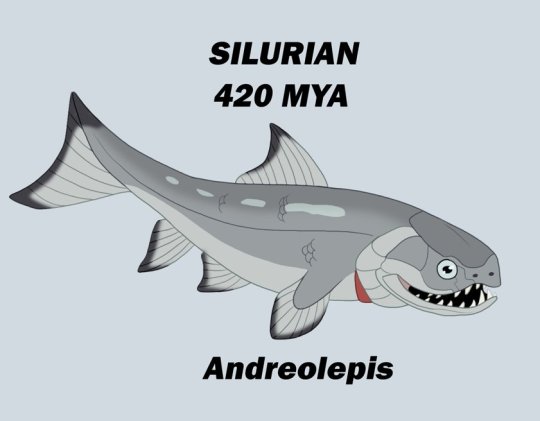
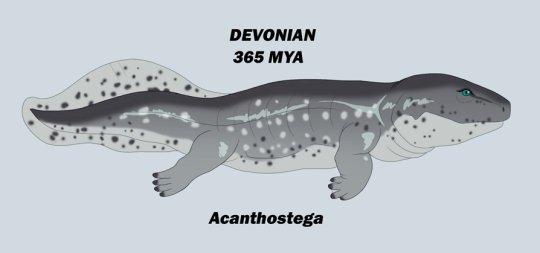



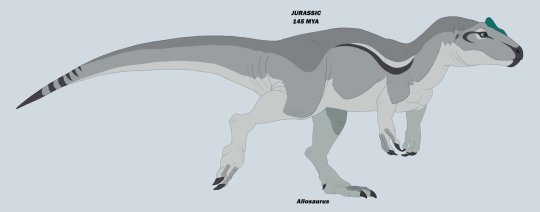
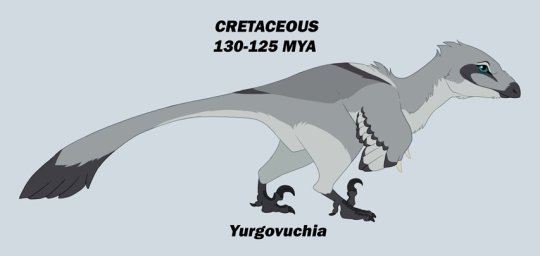
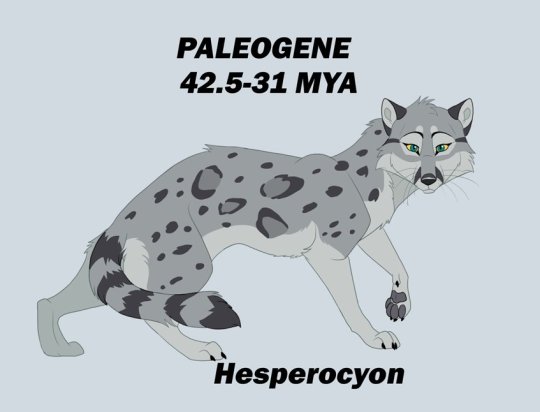
#PrehistoricChallenge#my art#paleoart#fursona#dinosaurs#cambrian#ordovician#silurian#devonian#carboniferous#permian#triassic#jurassic#cretaceous#aspenwynd
107 notes
·
View notes
Text


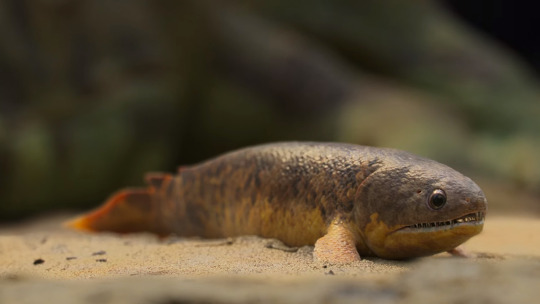
They're kind of cute in that old man kind of way
93 notes
·
View notes
Text
Time Travel Question 38: Pre-History Continued
These Questions are the result of suggestions from the previous iteration.
This category may include suggestions made too late to fall into the correct earlier time grouping. Basically, I'd already moved on to human history, but I'd periodically get a pre-homin suggestion, hence the occasional random item waaay out of it's time period, rather than reopen the category.
In some cases a culture lasted a really long time and I grouped them by whether it was likely the later or earlier grouping made the most sense with the information I had. (Invention ofs tend to fall in an earlier grouping if it's still open. Ones that imply height of or just before something tend to get grouped later, but not always. Sometimes I'll split two different things from the same culture into different polls because they involve separate research goals or the like).
Please add new suggestions below if you have them for future consideration. All cultures and time periods welcome.
#Time Travel#Friesenhahn Cave#Homotheriums#Mammoth#Megafauna#Pre-History#Ceratopsia#Dinosaurs#Carboniferous#Insects#Evolution#Jellyfish#Sea Creatures#Spinosaur#Hallucigenia#Lepidodendrons#Extinct Plants
59 notes
·
View notes
Text
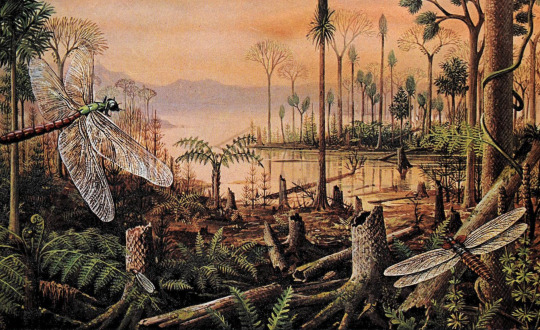
Late Carboniferous scene, G. B. Bertelli
When the air is still, soaked in the swamp's humidity, the only sound is that of the meganeurids' wings beating against it. It is like the gentle noise of paper rattling in the wind, or breaths shivering against the throat.
But to the swamp's the smaller insects, the beat of those wings is like the roar of thunder, a buzzsaw that warns them to retreat under leaves, under logs, under water. Bugs freeze, flies flee, and silverfish slither into shadows when the meganeurids pound the skies with those French chapel wings. Those who ignore the warning are snatched and devoured before they know they are dead.
64 notes
·
View notes
Text

Spotted some Meganeuras on my last trip
424 notes
·
View notes
Text

"Vue ideale de la terre pendant la période du calcaire carbonifere" [Ideal view of the earth during the Carboniferous limestone period] by Edouard Riou, from La terre avant le déluge [The world before the deluge] by Louis Figuier, 1863
39 notes
·
View notes
Text
I think my quality of life would be measurably better if we still had Carboniferous-sized bugs around. I want to see farmers letting herds of Arthropleuria graze in the fields, Meganeura being trained the same way as in falconry, and swimmers having to watch out for eurypterids.
60 notes
·
View notes